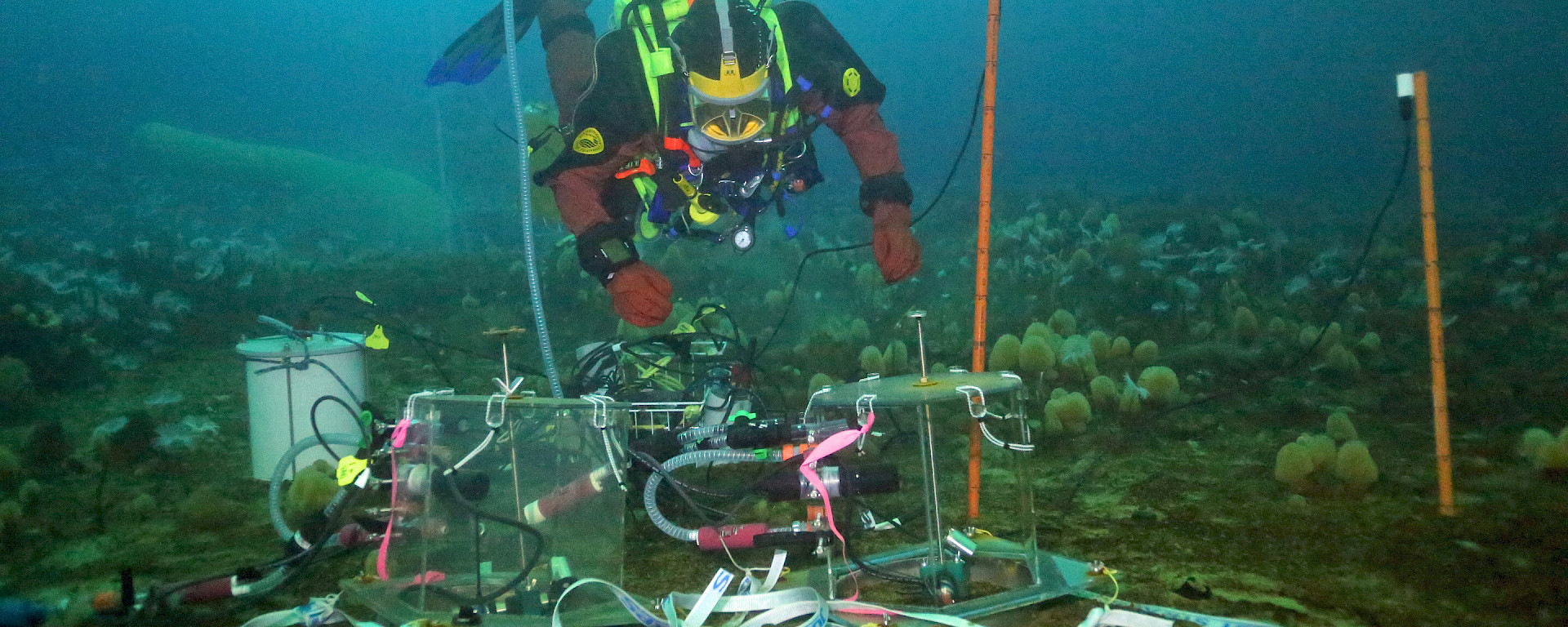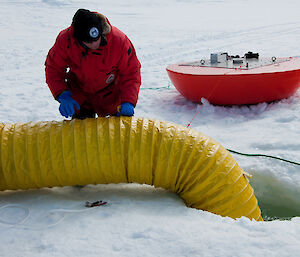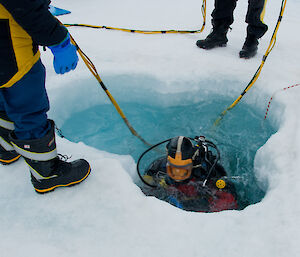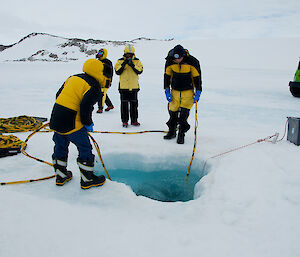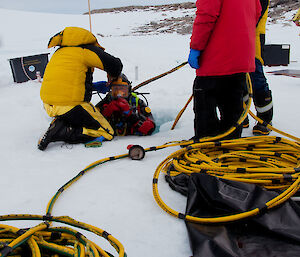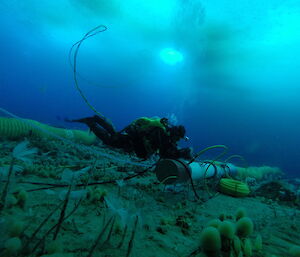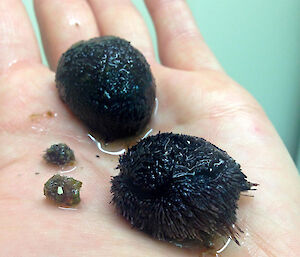A team of researchers diving under the Antarctic ice braved minus-two degree water temperatures and curious Weddell seals to complete the world’s first seafloor ocean acidification experiment in Antarctica.
The team of 15 people have returned to Hobart after studying the impact of ocean acidification on marine and seafloor communities at Australia’s Casey station over summer.
Australian Antarctic Division Project Leader, Dr Jonny Stark, said it was a challenging experiment in such an extreme environment.
“During the twelve weeks of the study we did over 200 dives, spending about 200 hours in almost minus 2 degree water,” Dr Stark said.
“The human body can only take those sort of temperatures for about an hour, so we had to continually rotate divers, and ensure they could be warmed up quickly once out of the water.”
The study mimicked future ocean conditions, predicted to be two and half times more acidic by 2100.
The research team of scientific and commercial divers, dive supervisors, engineers and technicians and PhD students, drilled holes through the sea ice to deploy four acrylic two-metre long chambers onto the seafloor.
Carbon dioxide-enriched seawater was then pumped into two of the chambers through a series of 40m long ducts or ‘slinkies’. Regular seawater was pumped through the other two chambers for comparison.
“The four chambers were fitted with underwater flow meters, thrusters, pH and temperature sensors and time-lapse cameras to record all the changes in the carbon dioxide-enriched environment, including the growth and behaviour of seafloor invertebrates and marine-plants.
“We took over 1200 samples of the various components of the ecosystem and while we don’t have any conclusive results yet, initial indications are that the photosynthesis of some of the tiny marine plants changed in response to the more acidic seawater and they may have migrated deeper into the sediment.”
Currently the Southern Ocean absorbs 40% of the global ocean uptake of carbon dioxide and polar waters are acidifying at twice the rate of tropical waters.
“The rate and scale of the changes we are seeing in the Southern Ocean are unprecedented, so it’s critical that we are able to get a clearer picture of how ocean acidification will impact the marine ecosystems into the future.”
The ocean acidification research was supported under Australian Research Council’s Special Research Initiative for Antarctic Gateway Partnership. The final results of the study are not expected to be known for several months.
The experiment was one of 28 research projects conducted in Antarctica and on sub Antarctic Macquarie Island over summer.
There were 84 ship days dedicated to marine science including a voyage to the Totten and Mertz glaciers, work off Australia’s Davis and Mawson stations looking at the foraging habitat of Antarctic seals and penguins, and a blue whales voyage.
This season 482 expeditioners and scientists went south with the Australian Antarctic program.
The Aurora Australis returned to Hobart yesterday after its final voyage of the season to Macquarie Island.

